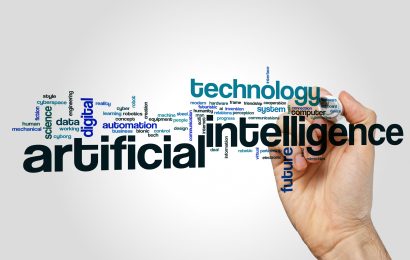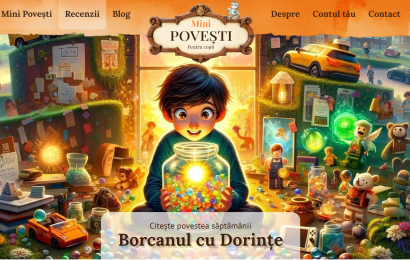Digital Media: A Traditional Perspective
An opinion by Cosmin Cojocaru, Managing Director at Carat Romania
Precision and Persuasion are two different things
A few weeks ago I got stuck in an elevator with a guy I never met before. Phones were dead, so we had to talk to each other for approximately 45 minutes until we got out. The conversation was awkwardly enjoyable, considering the circumstances. Do I think he’s an interesting fellow? Sure. Would I have a beer with him sometimes in the future? Don’t think so. Most probably the combination of my social skills (ridiculously low), particular mood (this happened after an unfortunate lunch) and general atmosphere (it gets pretty hot in a broken elevator) – all made me quite reluctant to enlarge my circle of friends.
From the very beginning, the ultimate goal of Advertising was the right message, in the right moment, to the right consumer. Historically, most media channels available manage to fulfill only a fraction of this goal. With Radio, Television, Outdoor or Print a media client had only the option to reach millions in order to affect thousands.
Then Online came along.
Initially, it was regarded as just another channel: an extra line in a regular media plan. But the underlying Promise of Online was always extremely attractive: let’s stop bothering a lot of people, so that few can be pleased. We now have the ability to just talk to the thousands.
In the following decade Online grew spectacularly. Usage of all digital channels (especially Social Media) went through the roof. These days, virtually all media became Digital media. This amazing growth was so exciting that, at some point, we even started to think that Online is about to kill “traditional” media channels like TV or Radio. Although this proved to be nonsense, the fact that a lot of people use Digital channels each and every hour is indisputable.
We then managed to refine exponentially our ability to target people in Online. Every digital action a person does produces a data point, regardless of whether the action is a search on Google, visiting a website, opening an app or engaging with Social Media. Many of these actions are irrelevant for media clients, while others allow them to clearly define a person of interest. Based on predefined rules, we can now communicate with that person in order to guide their consumer journey to maximize the probability of choosing a certain brand. Theoretically, the more data points you have about a person, the more accurate you will be in your targeting. This way, everybody wins: media clients are not wasting money anymore on uninterested prospects, and people only receive stuff that they are actually into.
Except that Advertising doesn’t seem to work that way.
Similar to my unfortunate experience from the other day, if you get stuck in an elevator with a brand, even with no distractions and a full attention span – you still won’t necessarily fall for that brand.
Choosing a particular product is an extremely complex development and Advertising is only a tiny part of that process. People don’t buy cars because they do test drives, people do test drives because they intend to buy cars. It takes a lot of subjective, disorderly, unmanageable factors to align in order for a certain person to be in the market for a certain brand. We still tend to fool ourselves into believing that clever advertising is enough to do the trick.
Except for a few brave men and women, most of us working in Advertising and Marketing, the vast majority of the prospects we are after don’t ever stop to contemplate the role of a beer or a detergent in their lives. They simply don’t. Their brains have always more important stuff to worry about, like survival, family, jobs, Facebook status etc.
I think the Promise of Online has two major problems:
1) No single data set can answer all the questions
We basically have three sources of data currently available: what people SAY, what people DO and what people SHARE. None of them are fully reliable.
- We know, for a while now, that we can’t rely on what people declare. Just think about the difference between the answer to a question like “would you go to the gym?” and the actual behavior.
- Every two months or so in the past eight years I regularly bought phenobarbital. A vigilant analysis of my purchase behavior might righteously conclude that I like to enjoy life from a special angle. The truth is I own an epileptic cat. As a pharmacist once told me, this excuse is too dumb not to be true.
- Finally, if we ever decide to take seriously what people choose to share on social networks – well, we will inevitably get depressed sooner or later. There is a fearsome asymmetry at work which makes us judge ourselves harshly: we know our own lives from the inside, while we generally have only a heavily edited, limited and sanitized picture of the lives of other people.
This is why no single data set can answer all the questions. The answers can only come from the connections between multiple types of data. Since none of the data sources available is fully reliable, only a very clever mixture of different types of observations can sometimes (and only sometimes) become the basis of real, actionable insights.
Gathering all relevant data sources under the same roof and making them all available to the same data analysts is an extremely difficult and relentlessly ongoing enterprise. When it comes to data, the competition is fierce. These days the trend seems to be the opposite direction: walled gardens are becoming more walled than ever and we are witnessing the rise of digital drawbridges.
2) Technology is not the issue
Don’t get me wrong, I have a rather optimistic view about the future: the number of available data points can only increase, data scientists will further refine their abilities to distinguish signals among the noise and new technologies will allow us to actually make sense of what’s going on. However, the underlying problem here is not technological. Even if, at some point, some kind of Artificial Intelligence is going to perfectly combine all data sets out there – we will still face a major hurdle: our own brains.
Our brains are brilliant instruments, able to reason, synthesize, remember and imagine at extraordinary speed. We trust them immediately and we have good reasons to be deeply proud of them. However, these brains are also very subtly and dangerously flawed machines, in ways that typically don’t reveal themselves to us.
Our brains are extremely bad at understanding themselves, or the brains around them. They usually have no idea why they have certain thoughts or ideas. They don’t typically notice the role that things like levels of sleep, sugar, hormones and other physiological factors play upon the formation of ideas. As my wife once told me, behind every grumpy woman there is a confused man, wondering what exactly he did wrong.
Our brains constantly get excited about things which aren’t quite good for them like, for example, salt, sugar or sex with strangers. Advertising knows very well how to exploit all these cognitive weaknesses.
Our brains don’t like uncomfortable information: they usually look out for data that confirms their own biased choices and, most of the time, place self-protection above truth.
These brains grew up dependent for their survival on the mood of other brains. Therefore they are highly primed to fit in with common sense and prevailing opinion. Other people’s viewpoints matter hugely, irrespective of how foolish they might be. Few compliments can delight us, a single criticism can create panic. This is tricky in the age of Facebook, Instagram and Twitter. We become hypersensitive to what an absurdly small number of others believe.
We should constantly remind ourselves that Advertising needs to be designed for these flawed walnuts. Even if all data out there points me as the perfect candidate for a certain brand (any brand) and even if you manage to stick me in an elevator with that brand – I might still not choose it because of frivolous reasons like a wrong smell association, something my grandmother said when I was six, or what the mushroom soup I had for lunch did to my mood.
The issue is not that these kind of data points cannot be processed (they most certainly can), the issue is that no one (me included) might not be aware of their existence. Before further perfecting our technology we need to find ways to decode our imperfect and elusive brains. We are operating with limited information, trying to interpret the world with flawed and blinkered minds under the constant sway of emotion, molded by our pasts and only selectively capable of reason and calm.
A possible solution would be to start treating Digital as just another MASS media channel. After all, this is exactly what it became. Traditionally, Advertising is following channels consumption: if people watch TV, then TV budgets increase. A considerable amount of people are online today, so Digital share of spending should obviously continue to increase.
We would just need to set the right expectations. Instead of chasing the right message, in the right moment, to the right consumer – we might as well do the same thing we do when we place a billboard in front of a supermarket: everyone sees it, some notice it, few act upon it.
Maybe we should stop confusing Precision with Persuasion, start using Online mainly for Awareness and just let all the other uncontrollable influences decide when and if a person will choose a certain brand.








